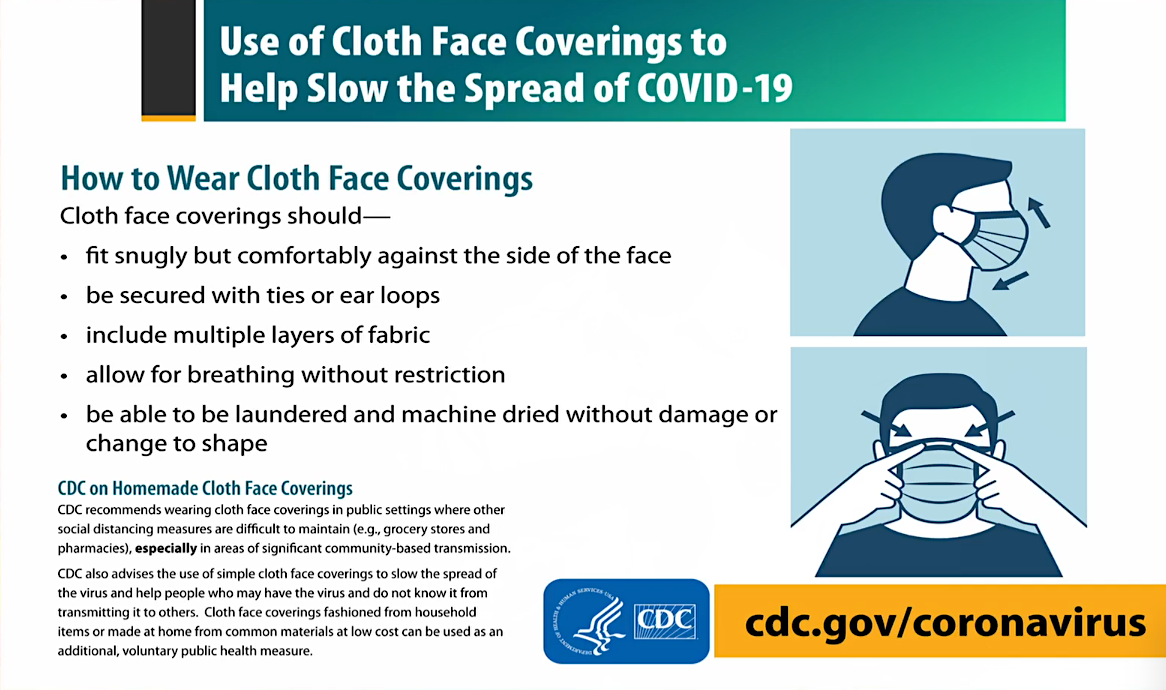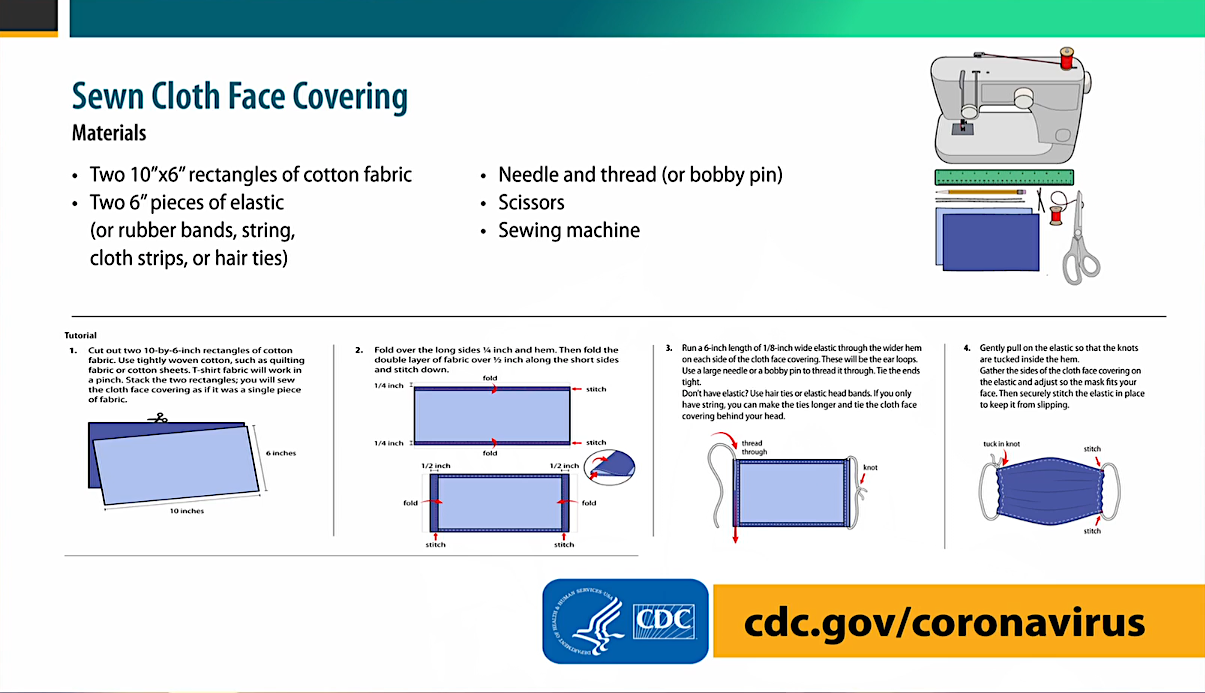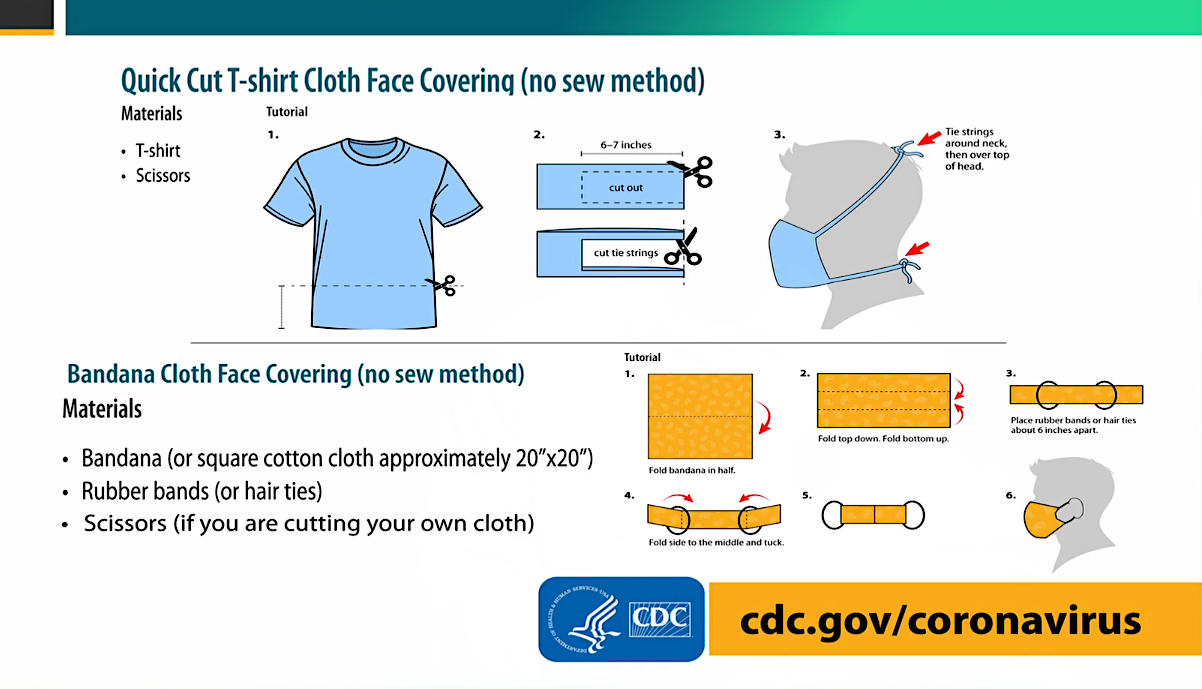Featured News - Current News - Archived News - News Categories
Can’t find masks online? Need to make a cloth covering? Not sure how?
Niagara County has some suggestions.
As part of her weekday afternoon community update on LCTV, Legislature Chairwoman Becky Wydysh was joined by Director of Emergency Services/Fire Coordinator Jonathan Schultz. The two discussed Gov. Andrew Cuomo’s new executive order requiring New York residents to wear a mask or a face covering when around other people in public.
“The governor, this past week, has put a couple of executive orders in that have really affected how we're going to operate out in the public, and also for us, for our businesses and whatnot; for essential services,” he said.
Schultz explained, “When you can't maintain that social distance of 6 feet, they want you wearing some type of a face covering.”
How to Make a Face Covering
Schultz said the Centers for Disease Control “has some great guidance on this, for how we can operate, what we can do with a simple face mask: some cloth together with some bands on the end and around your ears. It gives us that good protection. It’s not that great protection we get from medical devices or medical PPE, but it really does a good job of helping us when out there – when we can't have that social distancing. That 6 feet is very important for us to remember.”
Schultz said a face mask or cloth covering should “fit snugly, but comfortably, against the side of the face, and be secured with ties in the ear loops to make sure it stays on our face.”
He detailed how the covering can be something “as simple as a 10-by-6 rectangle of cotton fabric. Use tightly woven cotton, such as quilting fabric or cotton sheets; T-shirt fabric (or a bandana) will work in a pinch.”
CDC Instructions and Examples
“The most important thing to remember when we’re putting our mask on. … Cover your nose, cover your mouth,” Schultz said. “You're protecting yourself; you’re protecting your loved ones, and those around you."

Visit www.cdc.gov/coronavirus to see larger versions or for more information.


Images courtesy of the CDC/LCTV
“And when we take it off, same thing: Just grab the ear loops, pull it off," Schultz said. “Nice thing about that is you’re not really touching your face, not touching your nose, your mouth or your eyes – which, obviously as we know, for so long now we’ve been hearing from our public health officials and everyone else: We want to keep our hands clean, and keep those away from our face.”
Cleaning Masks
Schultz noted the homemade apparatus should be cloth that can be washed or otherwise cleaned regularly.
“Yes; they should be routinely washed, depending on the frequency of use,” Schultz said.
“The best thing to do is (clean) with a washing machine,” he noted. “The washing machine, from what we're hearing from CDC and others, is get that hot water with it; that way, any dirt it might have on it, or any possibility of having COVID or coronavirus on it, that way with the soap and the hot water will take care of it. Let it air dry and you're good to go again once it's dry.”
Saving PPE for Those Who Need It Most
Both Wydysh and Schultz said specialty N95 masks should be reserved for first responders and medical professionals.
“We need these available for our first responders,” Schultz said. “We need these for our health care providers who are out there on the frontlines day in, day out, taking care of our sick patients, our COVID patients, and our loved ones. We want to make sure they have this PPE.
He said N95 and surgical masks are essential personal protective equipment because they give “protection to our first responders and our health care providers so they don't get sick; they don't transmit the disease; the disease doesn't get transmitted to them. So, we want to make sure we're not out buying these, we're not overusing these, because that's important for them.”
Wydysh added, “We're not expecting the public to find the N95 masks (online or in stores) … and those need to be saved for the people who are working in the frontline jobs who have to have those available.”
Moreover, she said, “There might be individuals who have those (higher-grade masks) at home already, and they think that's safer. They want to use that. But it's my understanding that you have to have that fit very specifically for it to work on you.”
“With N95s … it has two loops on it: one for a lower, one for the upper; but also it has a nose metal covering to help pitch it down around tighter on your nose.
“And you have to go through what's called a fit test,” Schultz said. “Basically, we use Bitrex solution with a hood over it. And basically what you do is – to make sure it's fitting properly – you can't smell that solvent, so you know it's fitting well. Because, if you start smelling it, you know that it’s not fitting well. So, we get you a different size. And (the test) also teaches you the proper way so you know how it should fit on your face so there's not any possibility of that virus or something else coming through, and actually affecting you – not even knowing it.
“So, it's very important with the N95s is to make sure you have the right size, and their fit-tested to know you're wearing it properly.”
Wydysh again reminded residents, “This is not just about your health; this is about everyone who is around you.”

Spice Harbor owner Kristen Brolinski






























